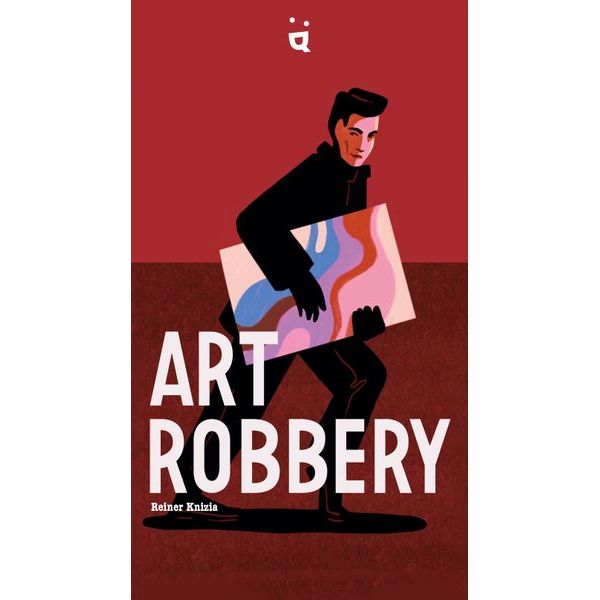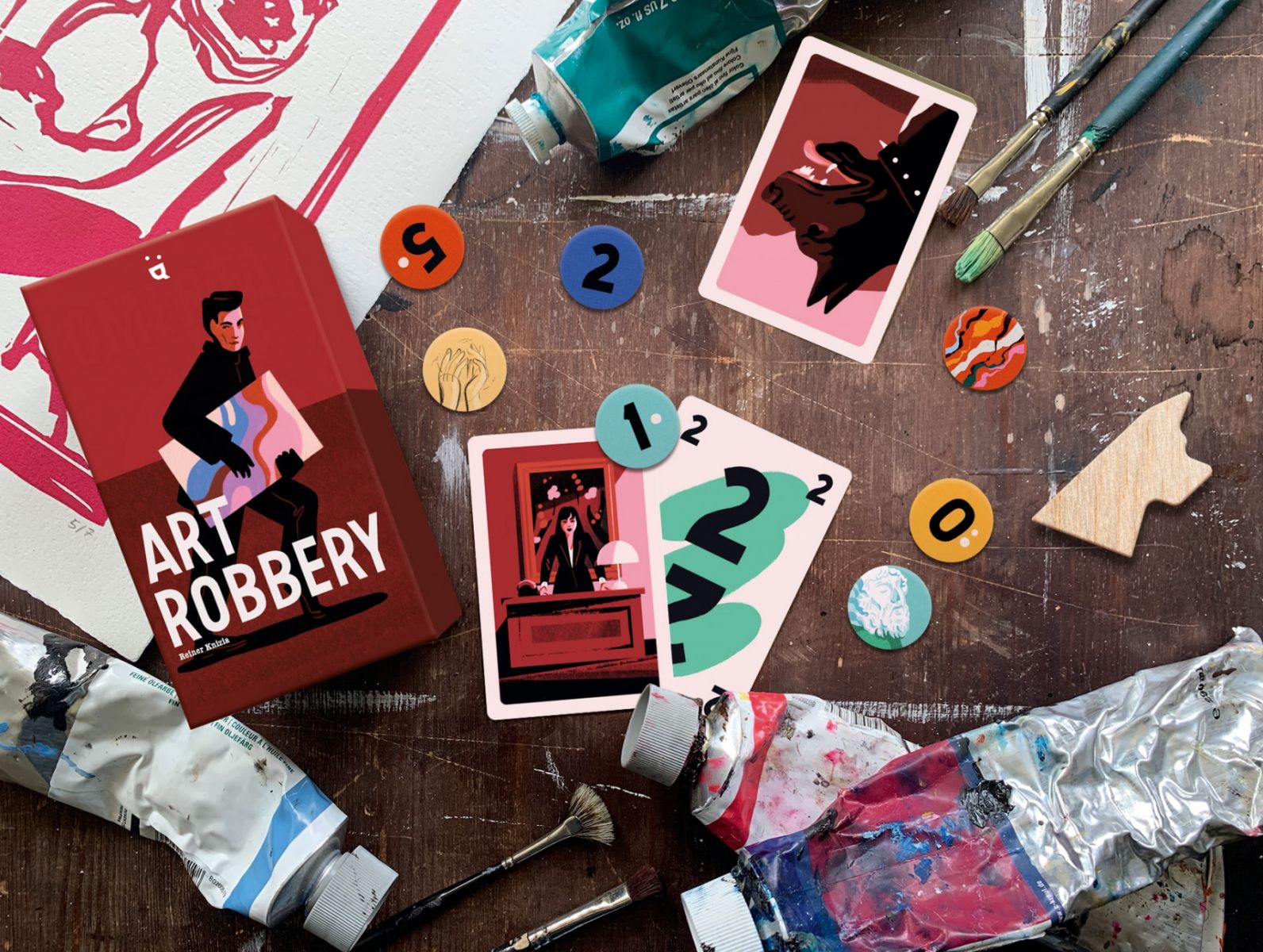Divvy Up the Loot in Art Robbery!

Your team has pulled off a series of epic art heists! But now it’s time to divide the loot, gather alibis, and come out on top.
Designed by Reiner Knizia and published by Helvetiq, Art Robbery is a fast-paced card game, with plenty of player interaction to keep things unpredictable.
Gameplay
The game is played over four rounds. Each round comes with its own set of loot tiles. At the start of each round, you spread that round’s tiles out face-up in the center of the table. These tiles are numbered zero through five, and there is always at least one additional boss tile. Some tiles also have little white dots on them, with each dot representing one alibi. At the start of the game, the deck of cards are shuffled and five cards are dealt to each player.
During a round, on your turn you play a card and then draw a new one. When you play a number card, you take a token of that number from the center of the table and place it face-up in front of yourself. If there are no tiles with that value in the center, then you may steal one from another player. The greedy thief tile allows you to take any one number token from the center of the table but doesn’t allow you to steal from another player. The guard dog allows you to take the guard dog token. If another player tries to steal a token from you while you have the guard dog, you may instead give them the dog token. Finally, playing a boss card allows you to take the boss token. Boss tokens are worth five points, but if at the end of the round you do not have a four or five value token then you must discard it.
Once the last token is taken from the center of the table, the round ends. If you have a boss tile, you check if you can keep it. You then place all your tiles in a face-down stack. You keep your hand of cards, and the tiles for the next round are spread out on the table. Whoever has the guard dog gets to start the next round.
The game ends after the fourth round. Players count up all their alibis and the player with the lowest number is eliminated (in a two-player game, the player with the lowest number instead must discard tiles with a total value of ten). You then count up the value of all your loot tiles and the player with the highest number wins the game.

Photo provided by the publisher
Review
Art Robbery does an excellent job of combining a simple rule set with enough player interaction to create an engaging game. Do you want to grab the higher value tiles knowing they’re more likely to be stolen? Do you want to push to end the round fast or do you think you’ll be in a stronger position if you steal from other players and let them take tiles from the middle? Your strategy also depends on the cards in your hand, so you need to adapt based on your options.
The game has good component quality, with the cards made out of a nice material, a unique art style, and pretty solid tiles for the loot and a fun dog head meeple. It also all fits in a fairly small box, making this quite a portable game, and since it doesn’t take up to much space you could easily play this at restaurants or on smaller tables.
It is a little unclear from the rules whether boss tiles and the dog token can be directly stolen from other players, as it explicitly states that number cards allow you to steal tiles and that the greedy thief does not allow it, but doesn’t mention the boss and guard dog cards either way. We assumed you could steal these from an opponent, but for such a simple rule set, it really should be clearer.
Art Robbery definitely works better with more players, but it’s fast, enjoyable, and hinges on great player interaction while being quite easy to teach. Turns are fast, so that there is little downtime, and the game is just a fun, smooth experience.
Pros: Great player interaction, easy to learn, portable, component quality
Cons: Not at its best with two players, one or two points could be made clearer in the rules
Disclosure: we received a complimentary review copy of this game.




